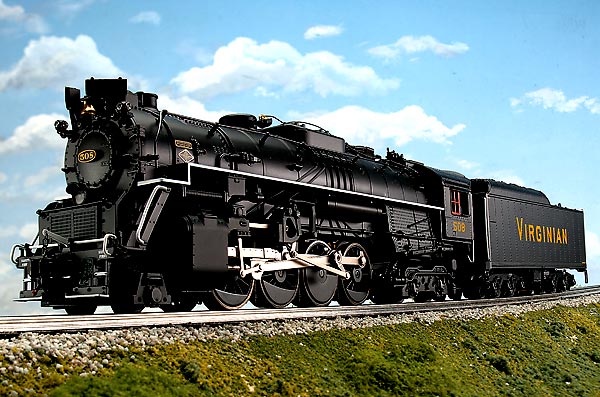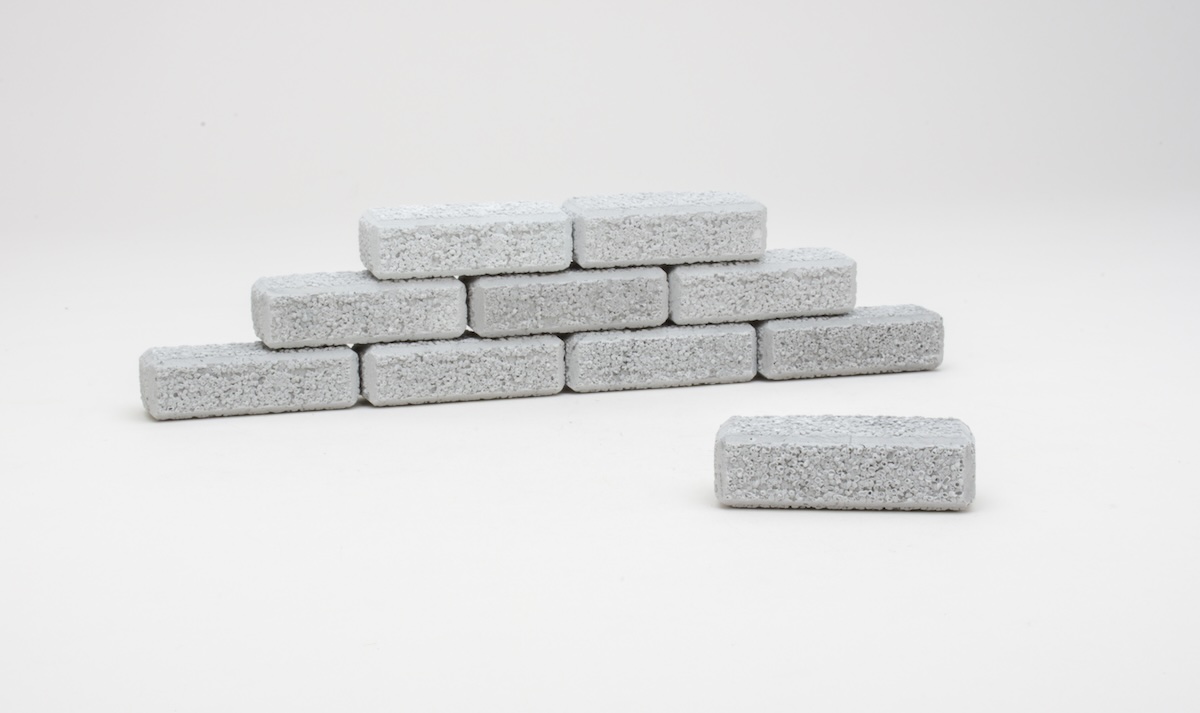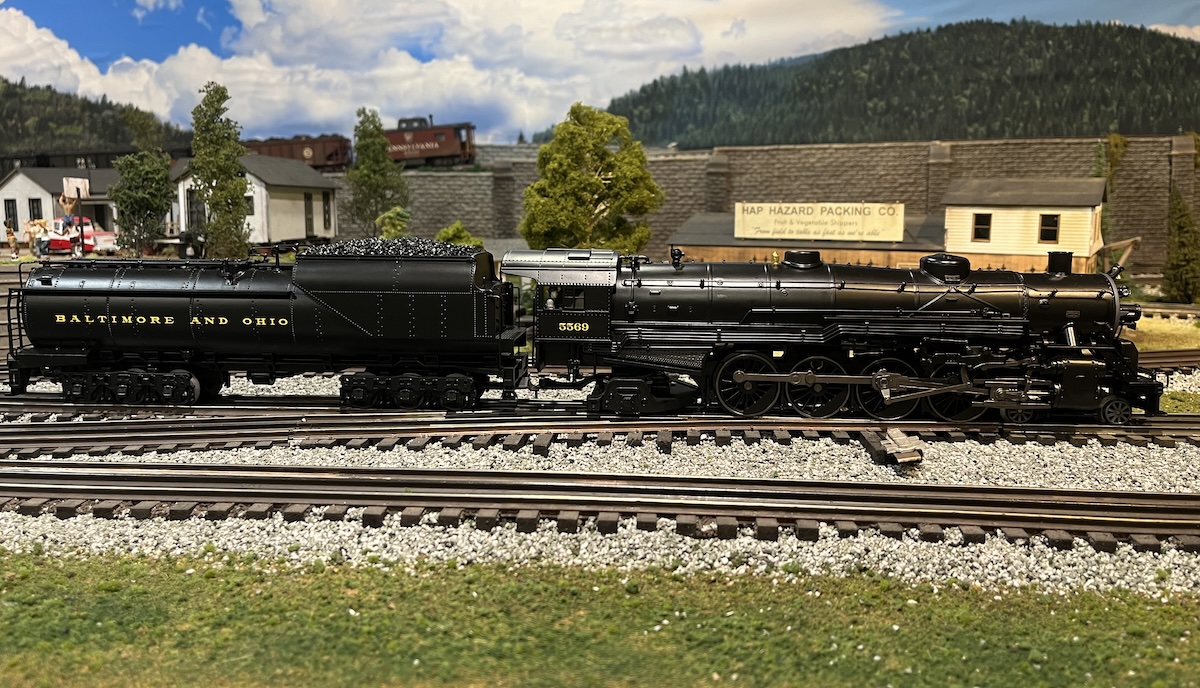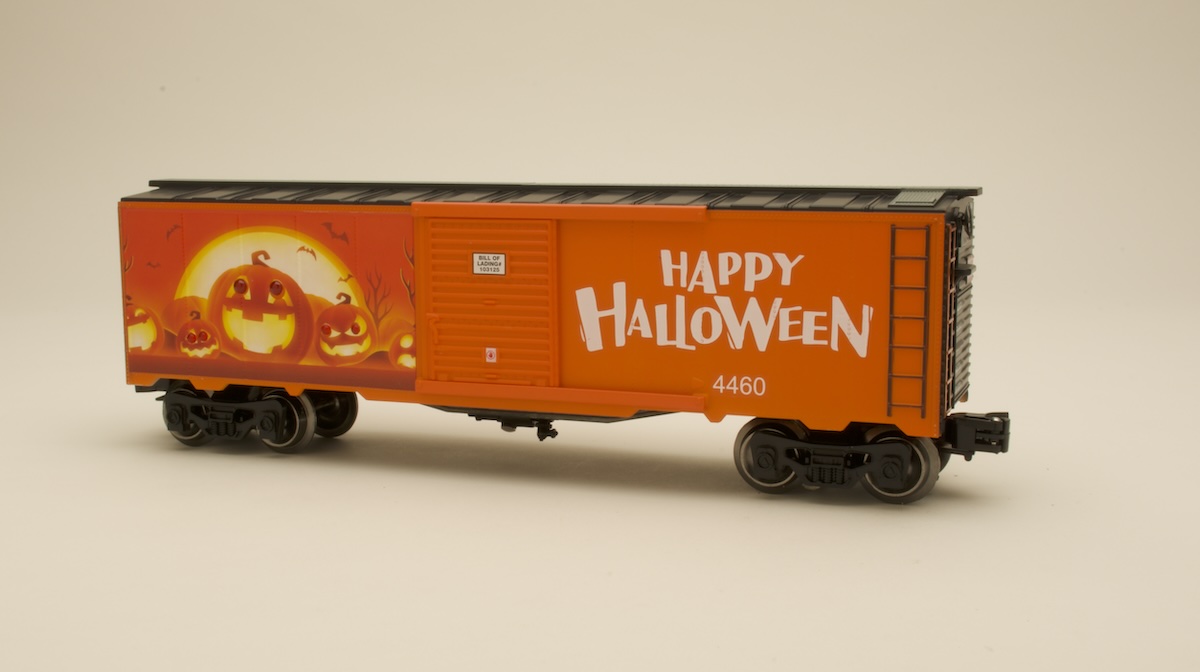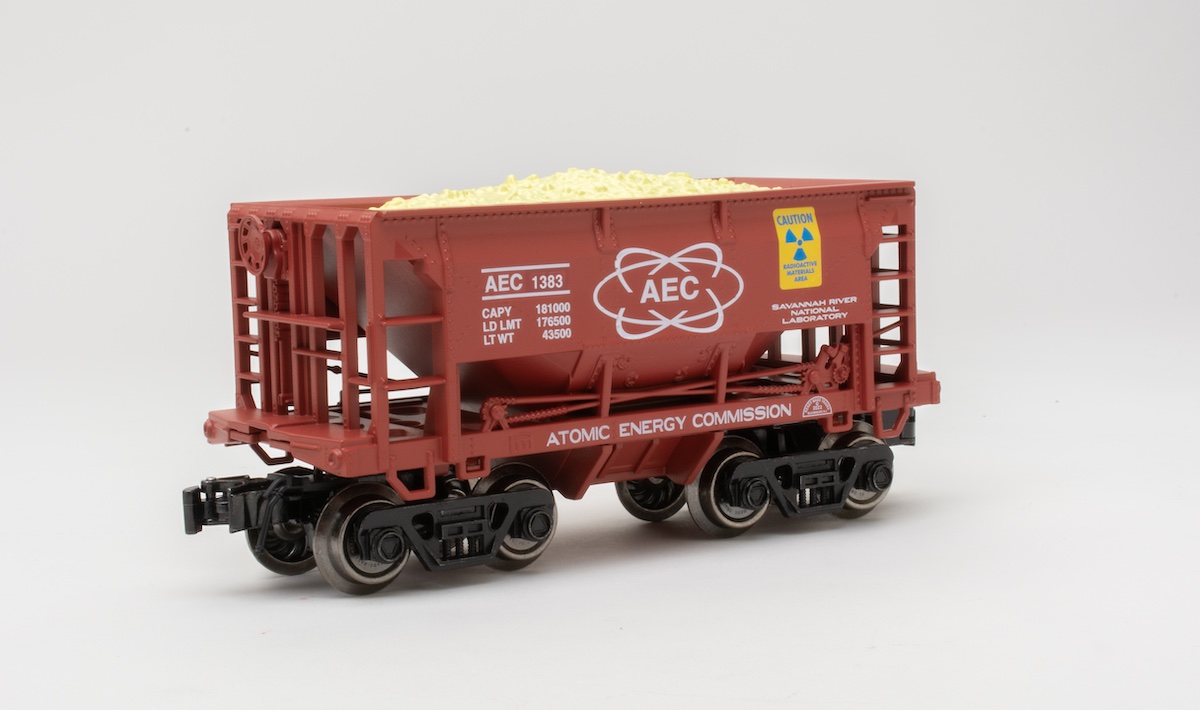As with Lionel’s C&O 2-10-4 (which used the Pennsy-boiler version of the locomotive), this Virginian Berkshire boiler is exceptionally close, but not an exact match of the prototype. The most noticeable feature is the dome between the sand dome and the smokestack, which wasn’t on the Virginian Berkshires.
While Virginian purists might balk, fans of this Eastern coal carrier should rightfully celebrate the existence of a scale-sized Lionel Virginian Berkshire.
The model
This locomotive has one of the most industrial and business-like faces you’ll find. Its flat nose and foot boards, along with a screen and a low-mounted headlight, suggest a hard-working locomotive and not some prissy passenger engine. There’s a number plate in the center of the smokebox and illuminated markers and number boards crown the front of the boiler.
The boiler itself is a beauty. The cast-in rivets, boiler bands, and piping are all deeply cut and look terrific. Notable are the four hatches on top of the huge sand dome – they looked so real that I thought they might even open (they don’t).
There’s a safety-tread pattern worked into the deck of the pilot and on the steps leading to the walkways framing the boiler, but the walkways themselves are smooth.
The cab is as nice as it gets, with a fully decorated backhead and white-accented gauges. I expected the windows to slide open, but they don’t. The roof hatch, however, slides open.
Illumination includes a headlight, marker lights, number boards, and a cab light, as well as a backup light on the tender.
The model uses Lionel’s wireless tether, which looks a lot better than a wire tether bigger than a 1:48 scale fire hose running between the engine and tender. A wireless tether is still the best idea to hit O gauge steamers since the traction tire!
Speaking of the tender, it’s a sturdy six-axle rig. The water hatches open to reveal the RailSounds volume knob and SignalSounds/RailSounds switch. The tender features grab irons, a ladder, and an additional grab iron running around the top of the water tank. The coal load is made of individual “chunks” and there are small nomenclature details, such as “25,000 gallons” and “21 tons,” on the side of the tender.
Add-on pieces also include simulated uncoupler arms on the pilot and the rear of the tender, piping with valves (I still love those red-painted handles), pop-off valves, and a wire lanyard attached to the whistle. Lima builder’s plates and trust plates are on both sides of the smokestack.
The side rods are a subdued, natural color that tends toward “understated dignity,” rather than “flashy,” when the locomotive is rolling around a layout.
Paint and decoration of the model are first rate. Black is smoothly applied throughout. White accents are prominent along the sides of the running boards, on the pilot, and on the grab irons and uncoupler arms on both the locomotive and tender. A dab of red paint on the air-brake line on the pilot is also nice.
On the test track
In conventional-control mode with the Odyssey speed control circuit turned on, our low-speed average for this beast was 5.03 scale mph (darn good by any measure), while the high-speed average was 73.3 scale mph. In command-control mode, the low-speed average dropped to 2.54 scale mph. Drawbar pull for the 12-pound, 10-ounce locomotive was 2 pounds, 15 ounces.
We did notice our sample locomotive exhibited some rough running at single-digit slow speeds. Even in command-control mode with the Odyssey speed control system on, our sample locomotive tended to lurch when slowly pulling away from a stop. Ultra-slow speed running was sometimes a series of stops and starts as the locomotive crossed track joints and other impediments.
After we’d completed testing, we had the chance to run the Berk as a prop for tours of the Kalmbach offices by members of the Lionel Collector’s Club of America, which was holding its convention in Milwaukee. The locomotive ran from 8:30 a.m. until 5:15 and performed flawlessly. It did develop a squeak, but that was solved by a liberal splash of oil on the side rods.
The Berk’s sound reproduction will leave a great big smile on your face. The chuffs are deep and robust, and the other sounds, from the bell and whistle to the many clinks and clanks, add about as much authenticity as possible to a basement operating session.
As mentioned, sound and volume controls are on the tender. The Odyssey, run/program, and smoke-unit controls are beneath the cab. All TrainMaster Command Control functions worked as advertised.
The Lionel Berkshire is an impressive model with an exquisite level of detail. Delivering generally good performance, this is a serious contender for your money regardless of which road name – Virginian, Nickel Plate, Erie, or Pere Marquette – you select.





